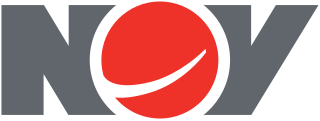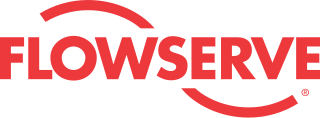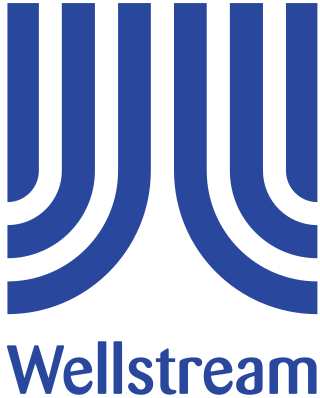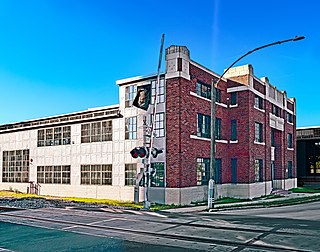Halliburton Company is an American multinational corporation responsible for most of the world's hydraulic fracturing operations. In 2009, it was the world's second largest oil field service company. It has operations in more than 70 countries. It owns hundreds of subsidiaries, affiliates, branches, brands, and divisions worldwide and employs approximately 55,000 people. The company has dual headquarters located in Houston and in Dubai, and remains incorporated in the United States.

Alfa Laval AB is a Swedish company, founded in 1883 by Gustaf de Laval and Oscar Lamm. The company, which started in providing centrifugal separation solutions for dairy, now deals in the production of specialised products and solutions for heavy industry. The products are used to heat, cool, separate and transport such products as oil, water, chemicals, beverages, foodstuffs, starch and pharmaceuticals.

Atlas Copco is a Swedish multinational industrial company that was founded in 1873. It manufactures industrial tools and equipment.

Baker Hughes Company, organized in Delaware and headquartered in Houston, is one of the world's largest oil field services companies. The company provides products and services for oil well drilling, formation evaluation, completion, production, and reservoir consulting. It operates in over 120 countries, with research and manufacturing facilities in Australia, Singapore, Malaysia, India, Dubai, Saudi Arabia, Italy, Germany, Norway, Oklahoma, Louisiana and Missouri. From 2017 to 2020, the company was majority owned by General Electric (GE); however, GE no longer owns a material stake in the company.
Fluor Corporation is an American multinational engineering and construction firm headquartered in Irving, Texas. It is a holding company that provides services through its subsidiaries in the following areas: oil and gas, industrial and infrastructure, government and power. It is the largest publicly traded engineering & construction company in the Fortune 500 rankings and is listed as 259th overall.

NOV Inc., formerly National Oilwell Varco, is an American multinational corporation based in Houston, Texas. It is a worldwide provider of equipment and components used in oil and gas drilling and production operations, oilfield services, and supply chain integration services to the upstream oil and gas industry. The company conducts operations in more than 500 locations across six continents, operating through three reporting segments: Rig Technologies, Wellbore Technologies, and Completion & Production Solutions.

Roper Technologies, Inc. is an American diversified industrial company that produces engineered products for global niche markets. The company is headquartered in Sarasota, Florida.

The Flowserve Corporation is an American multinational corporation and one of the largest suppliers of industrial and environmental machinery such as pumps, valves, end face mechanical seals, automation, and services to the power, oil, gas, chemical and other industries. Headquartered in Irving, Texas, a suburb of Dallas, Flowserve has over 18,000 employees in more than 55 countries. Flowserve sells products and offers aftermarket services to engineering and construction firms, original equipment manufacturers, distributors and end users. The Flowserve brand name originated in 1997 with a merger of BW/IP and Durco International.

Dover Corporation is an American conglomerate manufacturer of industrial products. The Downers Grove, Illinois-based company was founded in 1955. As of 2021, Dover's business was divided into five segments: Engineered Products, Clean Energy and Fueling, Imaging & Identification, Pumps & Process Solutions and Climate and Sustainability Technologies. Dover is a constituent of the S&P 500 index and trades on the New York Stock Exchange under "DOV". Dover was ranked 433rd in the 2022 Fortune 500. The company relocated its headquarters to Illinois from New York in mid-2010.

Terex Corporation is an American worldwide manufacturer of lifting and material-handling plant for a variety of industries including construction, infrastructure, quarrying, recycling, energy, mining, shipping, transportation, refining, and utilities. The company's major business segments include aerial work platforms, construction cranes, bulk-material hauling machines, road-paving machines, and container-port cranes.
FMC Technologies, Inc. was a North American company that produced equipment for exploration and production of hydrocarbons. FMC Technologies was incorporated in 2000 when FMC Corporation divested its machinery businesses. It exists today as a part of TechnipFMC, after a merge with Technip in 2017.

Stewart & Stevenson is a manufacturer and distributor of products and services for the oil and gas, marine, construction, power generation, transportation, mining and agricultural industries.

Wellstream Holdings plc was a British company which designed and manufactured flexible pipeline systems for the oil and gas industry. It was listed on the London Stock Exchange and was a constituent of the FTSE 250 Index before being acquired by General Electric in February 2011, then later sold off as part of Baker Hughes Company.

Sundyne is the company’s common name and the brand name for its products and services.

Cameron International Corporation (formerly Cooper Cameron Corporation (CCC) and Cooper Oil Tool, Cameron Iron Works) though now operating under Schlumberger, is a global provider of pressure control, production, processing, and flow control systems as well as project management and aftermarket services for the oil and gas and process industries. Cameron was acquired by Schlumberger (SLB) in 2016, and now operates as 'Cameron, a Schlumberger Company.' At the start of the SLB acquisition in 2015, Cameron employed approximately 23,000 people and delivered $9.8 billion in revenue.
Dresser-Rand is an American engineering and manufacturing company owned by Siemens Energy. The company designs, manufactures, and services equipment used in the extraction of petroleum and natural gas. The company was formed in 1986 as a joint venture of Dresser Industries and Ingersoll Rand.

Dover Artificial Lift is an oilfield services company headquartered in The Woodlands, Texas. The company provides products and services for artificial lift during production of petroleum and natural gas. Dover Artificial Lift was a member of Dover Corporation until 2018, when it was spun off as part of Apergy Energy.

KSB SE & Co. KGaA is a German multinational manufacturer of pumps, valves with headquarters in Frankenthal (Pfalz), Germany. The KSB Group has manufacturing plants, sales and marketing organizations, and service operations on every continent.

GE Oil & Gas was the division of General Electric that owned its investments in the petroleum industry. In July 2017, this division was merged with Baker Hughes.

Pleuger Industries is a German manufacturer of submersible pumps, thrusters, and plunger pumps. It is based in Hamburg, Germany. The word "Pleuger" is sometimes considered as synonymous for water-filled motors with multi-stage pumps. It is also considered as the pioneer of submersible turbine pump motor.
















